Santorini Travel Guide: Everything You Need to Know Before You Go
Dreaming of blue-domed churches, dazzling sunsets, and clifftop villages that look like they belong in a painting? That’s Santorini.
This stunning Greek island in the Cyclades is a bucket list destination for good reason. Whether you’re chasing romance, adventure, or just a slice of island life, Santorini offers a little bit of everything — with postcard-perfect views at every turn.
But here’s the truth: Santorini can be crowded, pricey, and overwhelming if you don’t plan it right. That’s why I’ve put together this complete travel guide — to help you experience the best of the island without the stress.
From picking the right time to visit, to navigating its winding streets, to finding hidden gems beyond Oia’s famous sunset — this guide has you covered.
Let’s dive in and make your Santorini trip unforgettable.
Best Time to Visit

The best time to visit Santorini really depends on what you’re after.
- April to June and September to early October are ideal. The weather is warm but not scorching, the island isn’t too crowded, and prices are reasonable.
- July and August are peak season. Expect hot days, high prices, and lots of tourists — but also the full buzz of Santorini’s nightlife, beach clubs, and events.
- November to March is off-season. Fewer tourists, lower prices, but limited ferry routes and many restaurants and hotels may be closed.
Personally, I went in late May, and it was perfect. Warm enough for beach days, cool enough for long hikes, and the crowds hadn’t fully arrived.
How Many Days to Stay

For a first-time visitor, 3 to 5 days in Santorini is the sweet spot. It gives you enough time to see the iconic sights, relax on a beach or two, enjoy a sunset dinner, and explore the quieter corners of the island.
- 3 days: Great for highlights — Oia, Fira, one beach day, and a sunset cruise.
- 4–5 days: Gives you more breathing room to visit Akrotiri, go wine tasting, or even hike the Fira–Oia trail.
When I visited, I stayed four nights — and I could’ve easily stayed longer. There’s something about the slow pace and beauty of Santorini that makes you want to linger.’
Where to Stay in Santorini
Santorini might be a small island, but choosing the right area to stay in can make a big difference to your trip. Each town offers something unique — from luxury cliffside views to laid-back beach vibes.
🏛 Oia – The Iconic Spot for Sunsets

If it’s your first time in Santorini, Oia is probably what you’ve seen on Instagram — whitewashed houses, blue domes, and that famous sunset. It’s romantic, luxurious, and dreamy.
Best for: Honeymooners, couples, photographers.
Keep in mind: It’s expensive and gets crowded at sunset. Book early!
🌆 Fira – Central and Lively

Fira is the capital of Santorini and the busiest town on the island. It’s filled with restaurants, shops, nightlife, and transportation hubs.
Best for: First-time visitors, party lovers, convenience.
Keep in mind: It can be noisy and touristy, but it’s a great base.
🏞 Imerovigli – Quiet and Scenic

Perched between Fira and Oia, Imerovigli offers the same caldera views without the heavy crowds. It’s peaceful and still close to the action.
Best for: Couples, peace seekers, luxury lovers.
Keep in mind: Fewer restaurants and shops, but breathtaking views.
🏖 Perissa (or Kamari) – Beachside Escape
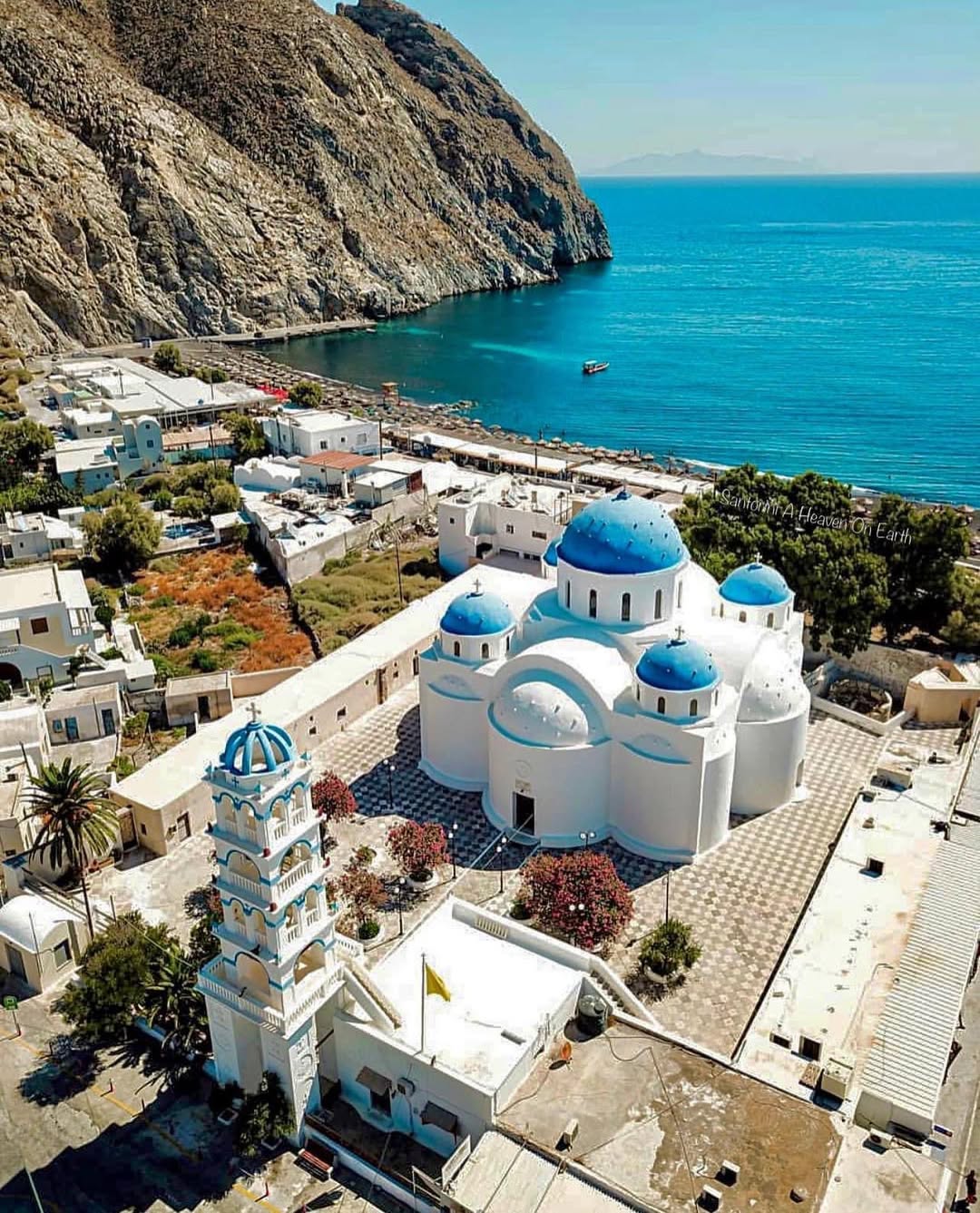
These black-sand beach towns are on the opposite side of the island from the caldera. You won’t get sunset views, but you’ll get sunshine, space, and budget-friendly options.
Best for: Families, budget travelers, beach lovers.
Keep in mind: You’ll need transport to reach Fira or Oia.
Getting Around the Island
Santorini has a few ways to get around — and choosing the right one depends on your comfort, budget, and how much you want to explore.
🚍 Public Buses
Affordable and reliable, the island’s buses connect major towns like Fira, Oia, Kamari, and Perissa.
Pros: Cheap (€1.60–€2.50 per ride), scenic.
Cons: Can be crowded, infrequent at night, limited routes.
🚗 Car or ATV Rental
For ultimate flexibility, rent a car or ATV. You’ll be able to explore beyond the tourist spots and hit hidden beaches or local villages.
Pros: Freedom, ideal for adventure seekers.
Cons: Limited parking in Oia/Fira, not ideal for nervous drivers.
🚕 Taxis
There are only a few taxis on the island, and they can be pricey, especially during peak season.
Tip: Always agree on the price in advance or ask your hotel to arrange one.
🚶♂️ On Foot
Many towns are best explored by walking. Oia, Fira, and Imerovigli are extremely pedestrian-friendly — and you’ll want to take your time soaking in the views.
Budgeting Your Trip
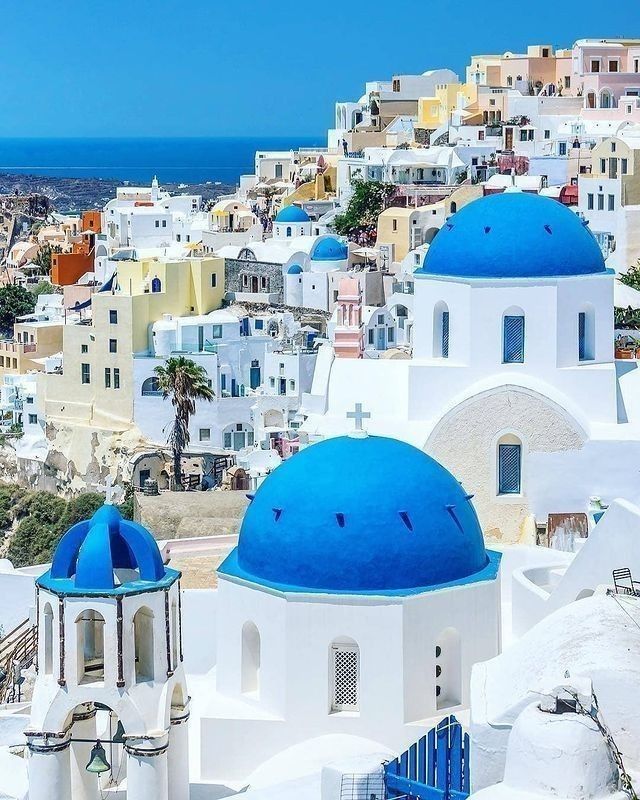
💸 Average Costs
Santorini can be pricey, but it’s possible to visit without breaking the bank.
- Accommodation:
– Budget hotels: $70–$120/night
– Mid-range: $150–$250/night
– Luxury cliffside suites: $300–$1000+ - Meals:
– Gyros/souvlaki: $3–$6
– Sit-down meal: $15–$40 per person
– Sunset dinner with wine: $50–$100+ - Transport:
– Bus fare: €1.60–€2.50
– Car rental: €40–€70/day
– ATV rental: €25–€45/day
💡 Money-Saving Tips
- Visit in shoulder season (April–early June or late September).
- Stay in Fira or the beach towns instead of Oia.
- Eat like a local — try bakery snacks and street food.
- Use public transport or share transfers with other travelers.
- Book excursions and tours in advance online for better deals.
Travel Tips Before You Go
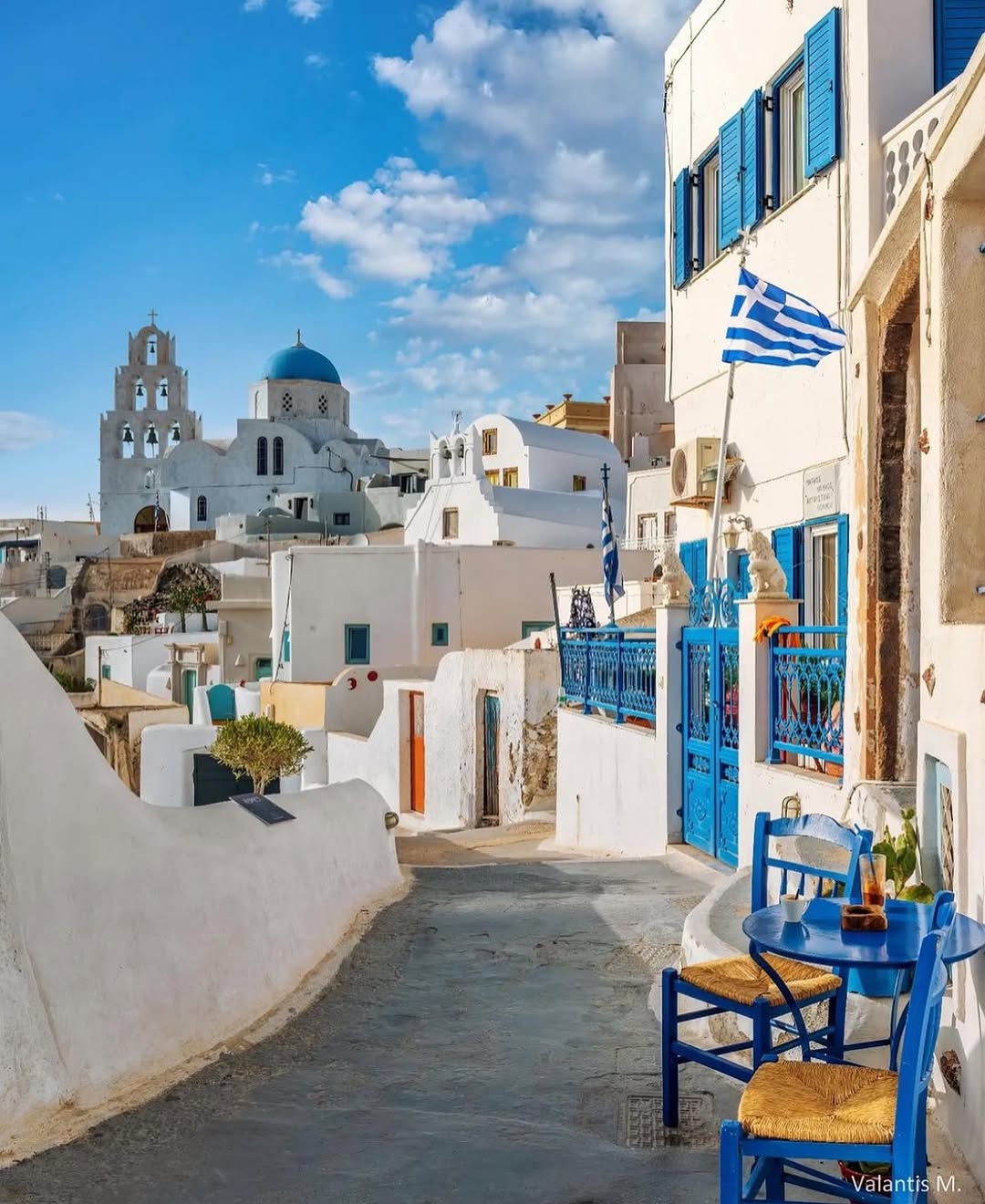
Here are some quick tips to help make your Santorini adventure smooth and stress-free:
- Bring comfortable walking shoes. The cobblestone paths and steep staircases are no joke.
- Book ferries and flights early. Santorini is popular — seats fill fast, especially in summer.
- Carry cash. Many restaurants and taxis prefer it, especially outside of Fira.
- Don’t drink tap water. Always buy bottled — it’s safer and tastes better.
- Respect local customs. Dress modestly when visiting churches, and be mindful of drone use.
- Stay sun-safe. Bring sunscreen, a hat, and a reusable water bottle — that Greek sun is strong!
Top Things to Do in Santorini
1. 🌅 Watch the Famous Santorini Sunset (Oia & Beyond)
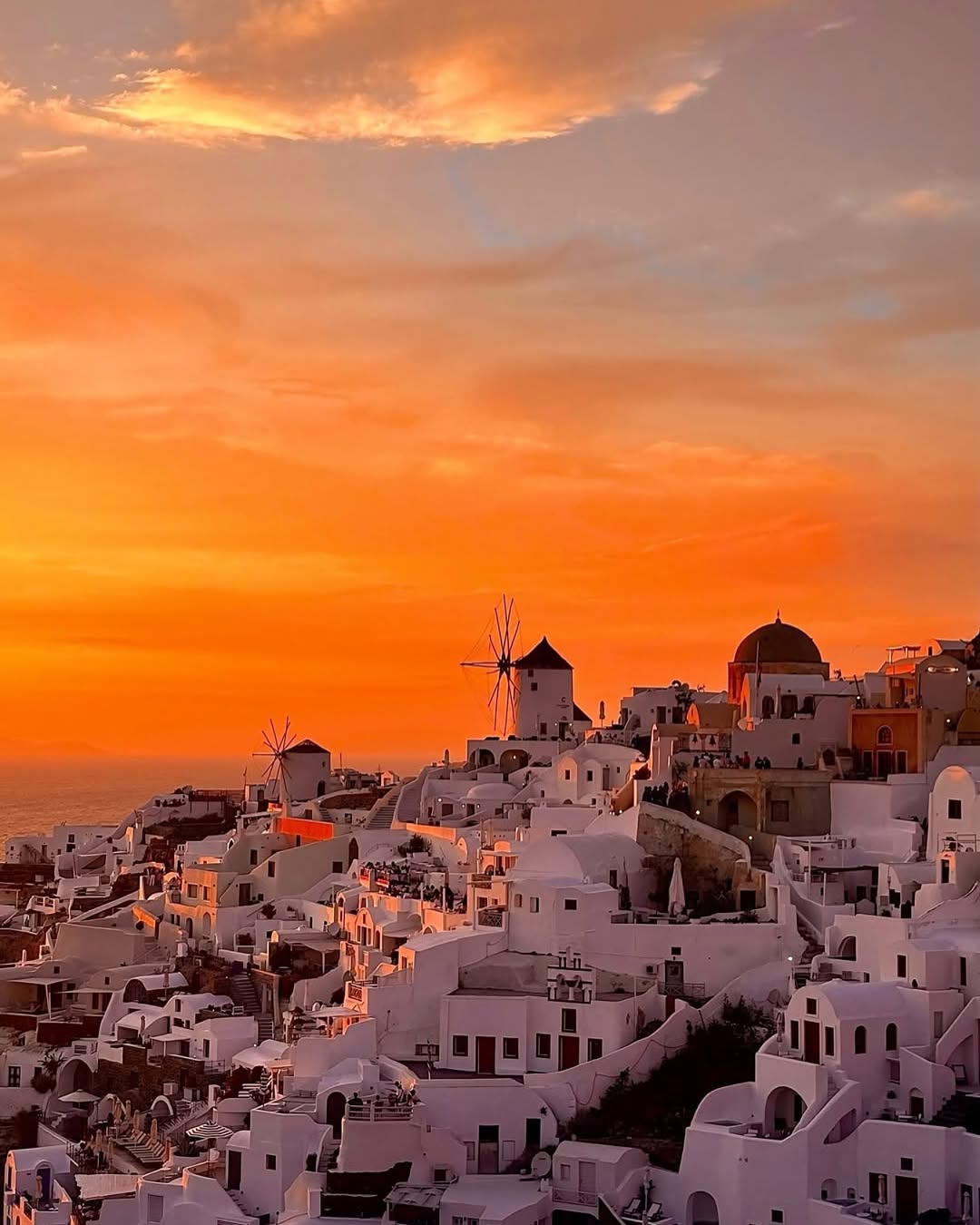
The sunsets in Santorini are legendary — especially in Oia, where people line the streets and castle walls for the perfect view. The sky turns golden, pink, and orange as the sun dips into the Aegean Sea.
Tip: For fewer crowds, head to Imerovigli or Skaros Rock for a more peaceful (but equally magical) sunset experience.
2. 🏛 Explore the Iconic Villages

Each village in Santorini has its own charm and story.
- Oia: Romantic, high-end, postcard-perfect.
- Fira: Bustling capital with shops, restaurants, and nightlife.
- Imerovigli: Quiet, cliffside views, luxury stays.
- Pyrgos: A hidden gem inland with panoramic island views and fewer crowds.
Wander the narrow alleys, admire the Cycladic architecture, and stop at local cafes.
3. 🏖 Visit the Black, Red & White Sand Beaches
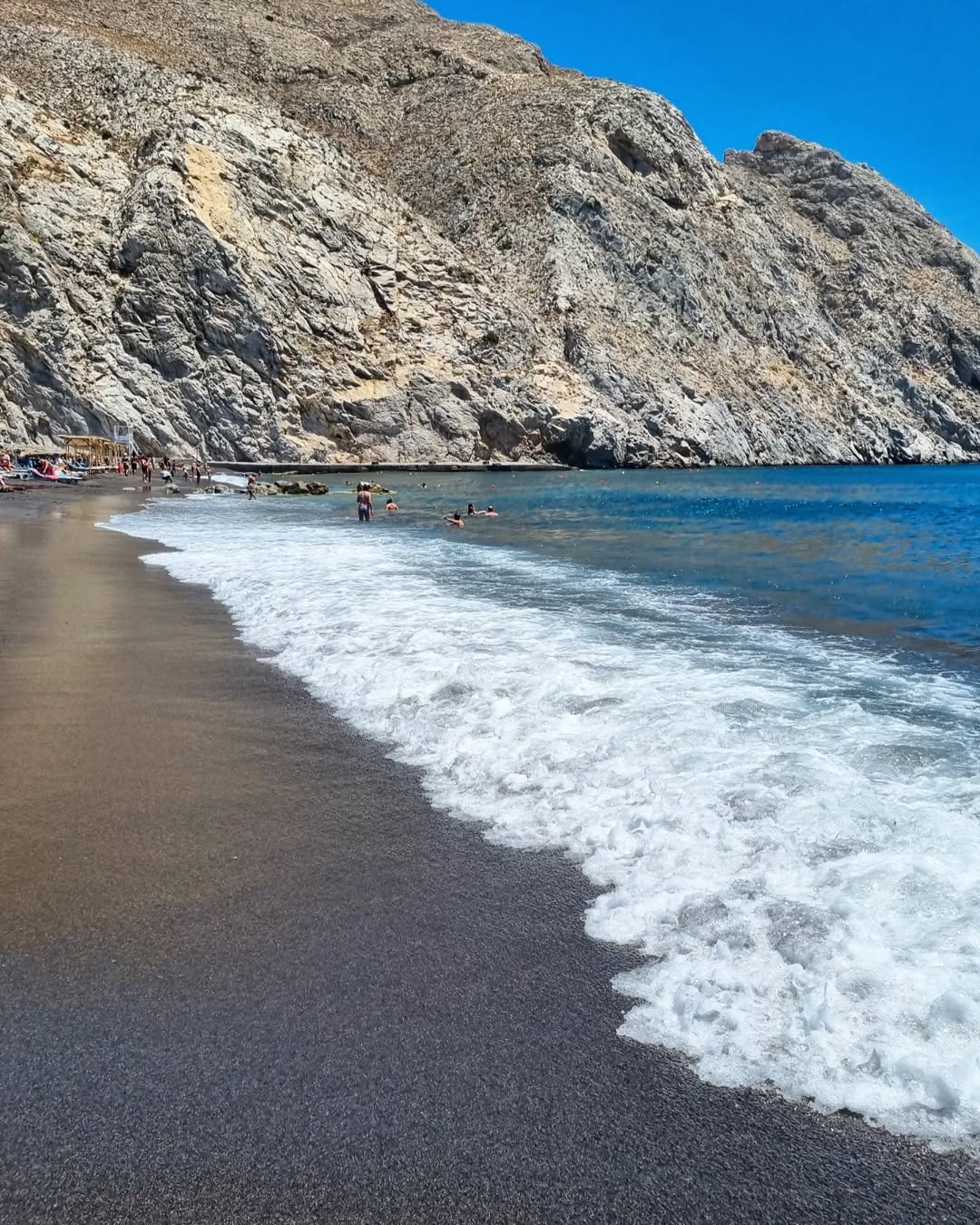
Santorini’s volcanic history gave it some of the most unique beaches in Greece.
- Kamari & Perissa Beach: Black sand, clear water, perfect for swimming.
- Red Beach (Akrotiri): Dramatic red cliffs and deep blue waters — worth the hike!
- White Beach: Only accessible by boat, this small, secluded beach is stunning and peaceful.
4. 🚤 Take a Volcano & Hot Springs Boat Tour

Sail around the caldera on a catamaran or traditional boat.
Most tours stop at the volcano (yes, you can hike it), the sulfur hot springs, and end with dinner at sunset.
Bonus: Some cruises offer snorkeling and barbecue on board.
5. 🏺 Visit Ancient Akrotiri & Historical Sites
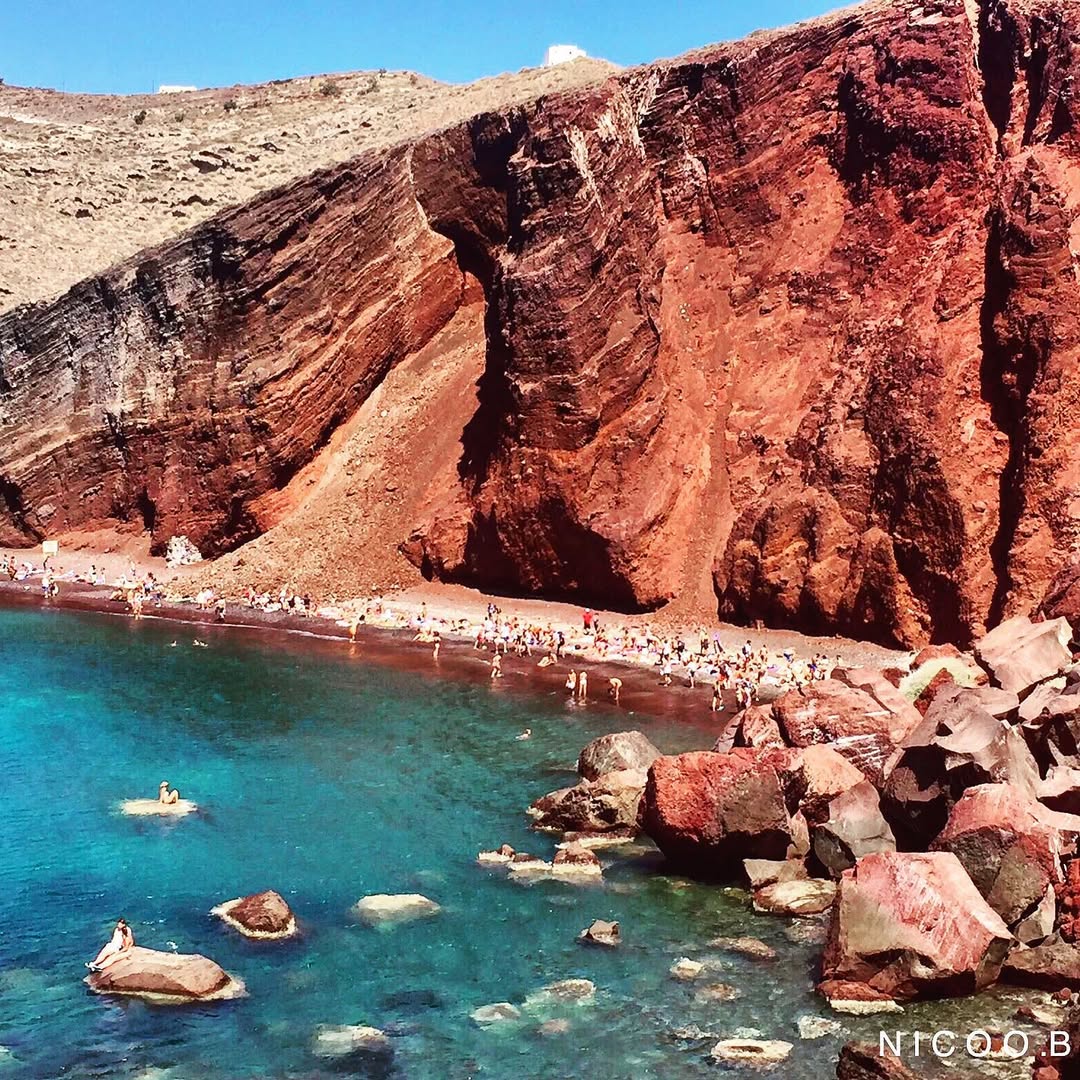
Often called the “Greek Pompeii,” Akrotiri is a fascinating archaeological site — a Bronze Age city buried under volcanic ash.
You’ll also find ruins at Ancient Thera high above Kamari, with incredible views and history.
Tip: Hire a guide or get an audio tour to bring the ruins to life.
6. 🍷 Enjoy Local Wineries & Wine Tasting

Santorini is famous for its Assyrtiko wine, thanks to the island’s volcanic soil.
Visit top wineries like Santo Wines, Venetsanos, or Domaine Sigalas to taste crisp whites and admire cliffside views.
Tip: Many offer wine tours with cheese pairings and sunset tastings.
7. 🥾 Hike from Fira to Oia
This scenic 6–7 mile trail along the caldera rim is one of the best walks in the world.
Expect stunning sea views, traditional chapels, and photo ops galore.
Tip: Start early to beat the heat and wear comfortable shoes. Bring water!
8. 📸 Take Insta-Worthy Photos at the Blue Domes
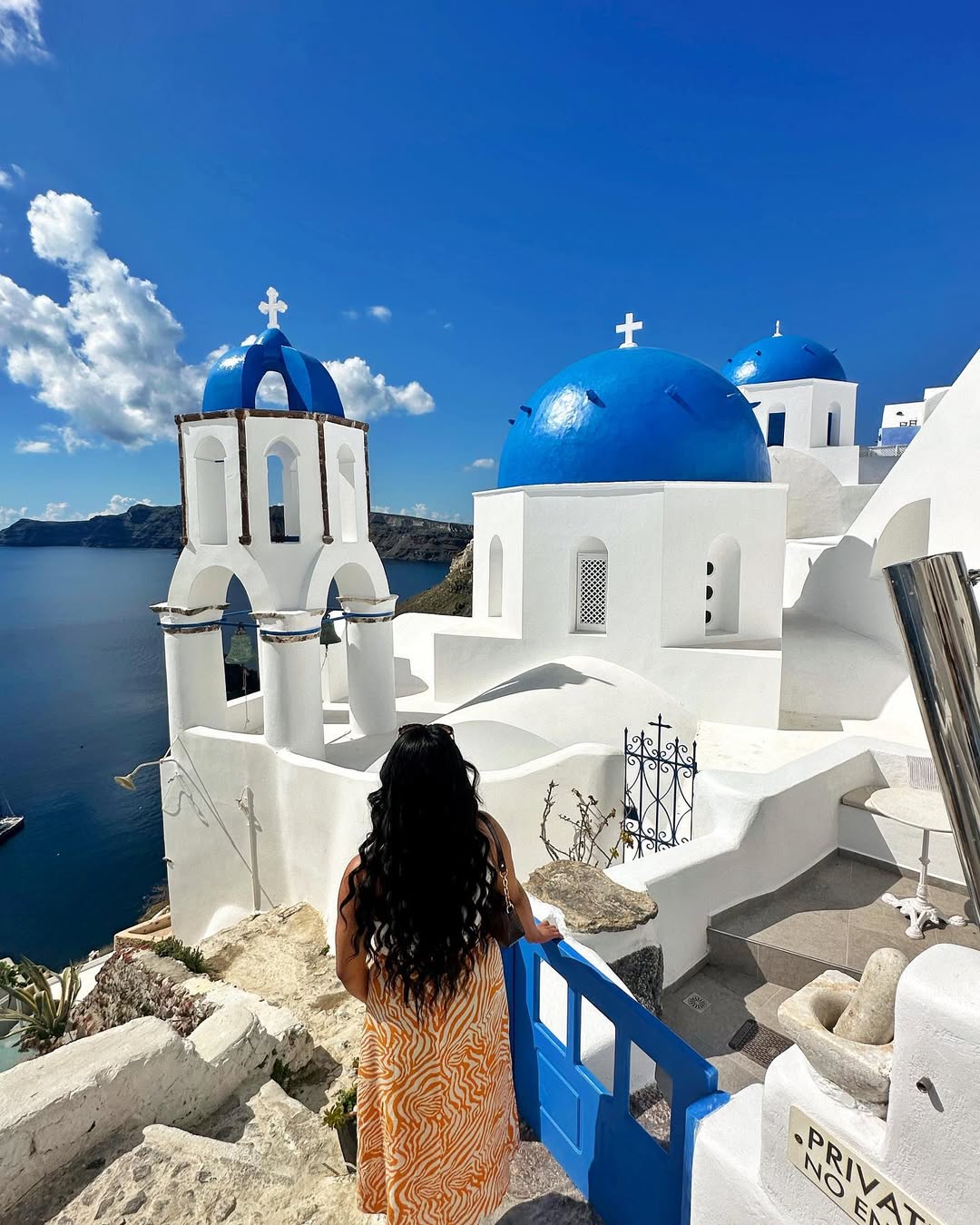
No trip to Santorini is complete without snapping that iconic shot — white walls and blue domes overlooking the sea.
Where to go: Head to Oia near the Church of Agios Spyridonas and Agios Anastasis. Be respectful — these are real churches in residential areas.
9. 🛍 Shopping in Santorini

From handmade jewelry and linen clothing to olive oil soaps and ceramics — Santorini has some beautiful souvenirs.
Best places: Oia’s boutiques, Fira’s main shopping street, and local artisan markets.
Pro tip: Look for authentic Greek goods rather than tourist trinkets.
10. ✨ Unique Experiences
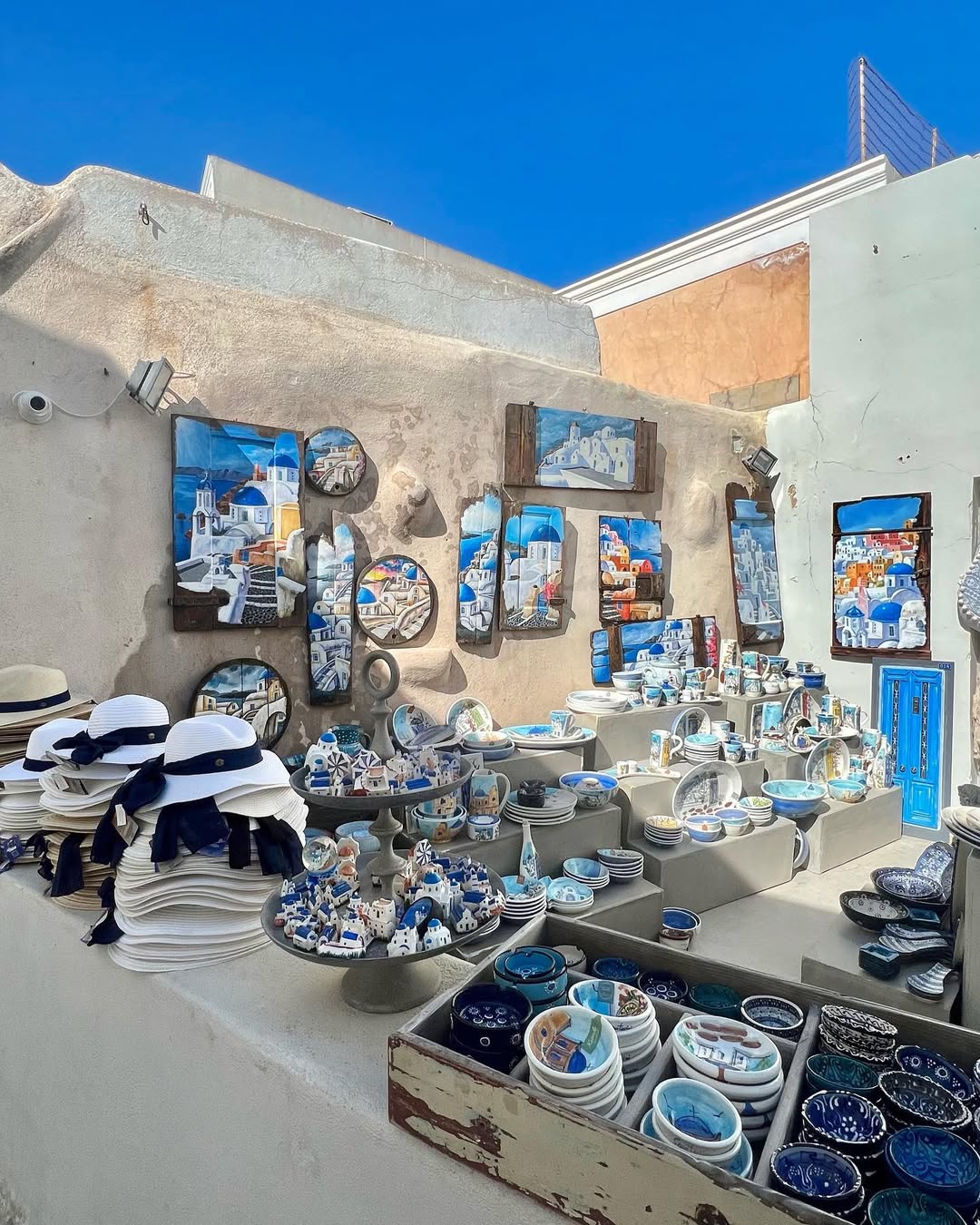
Want something extra special? Try:
- Cooking classes with locals — learn to make fava, tomato fritters, and baklava.
- ATV adventures to explore hidden villages and back roads.
- Private photo shoots with pro photographers in scenic locations.
- Sailing trips with gourmet food and music under the stars.
What to Pack for Santorini
Santorini is sunny, breezy, and stylish. Pack light, breathable clothing, but don’t forget essentials:
- Light layers (it gets chilly at night, especially in spring/fall)
- Comfy shoes for walking steep paths and cobblestones
- Swimsuits for beach days and hot springs
- Sun protection — hat, sunglasses, reef-safe sunscreen
- Adapters — Greece uses the Type C & F (European) plugs
- Small backpack or crossbody bag for daily exploring
If you’re visiting off-season, add a light jacket and maybe a scarf.
Food to Try in Santorini


Santorini’s cuisine is fresh, local, and full of flavor. Don’t miss:
- Tomatokeftedes (fried tomato fritters)
- Fava (pureed yellow split peas)
- Grilled octopus
- Chlorotyri (local goat cheese)
- White eggplant dishes
- Fresh seafood pasta
Finish your meal with baklava or loukoumades (Greek donuts), and pair it all with a glass of Assyrtiko wine.
Local Etiquette & Culture

Greeks are warm and welcoming. A few things to keep in mind:
- Say “Kalimera” (Good Morning) and “Efharistó” (Thank You)
- Dress modestly when visiting churches
- Don’t flush toilet paper — use the bin provided
- Respect private homes when taking photos (especially in Oia)
- Tipping isn’t mandatory but appreciated — 5–10% is common in restaurants
Safety Tips for Travelers
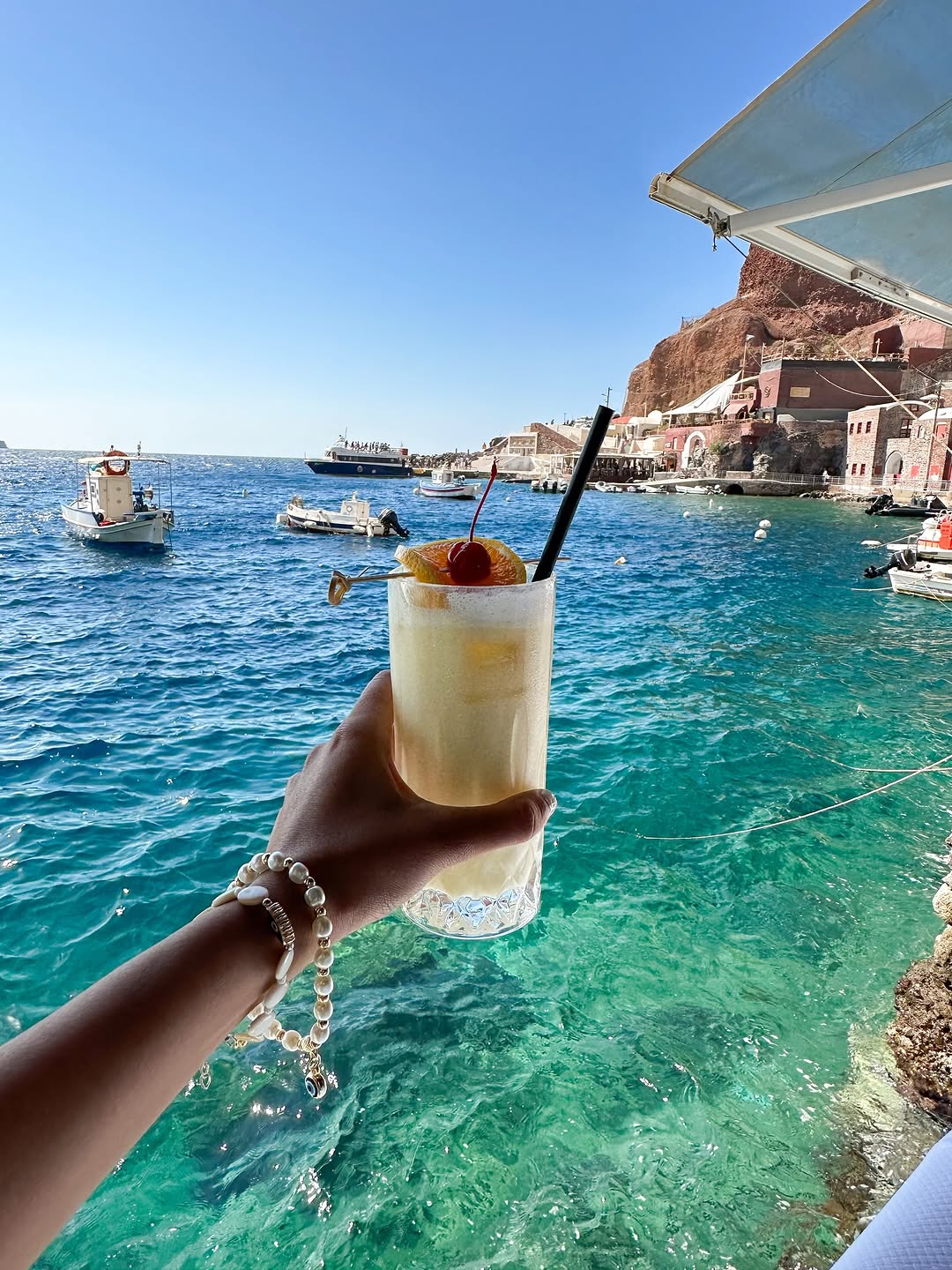
Santorini is very safe, but here are a few smart precautions:
- Be careful on cliffside paths — wear good shoes and watch your step
- Don’t drink tap water — buy bottled or ask for filtered water
- Watch for motorbikes and ATVs, especially in tight streets
- Book reputable boat tours and excursions
- Use hotel safes for valuables
Pickpocketing is rare but can happen in busy areas — keep your belongings secure.
Day Trips & Excursions Nearby
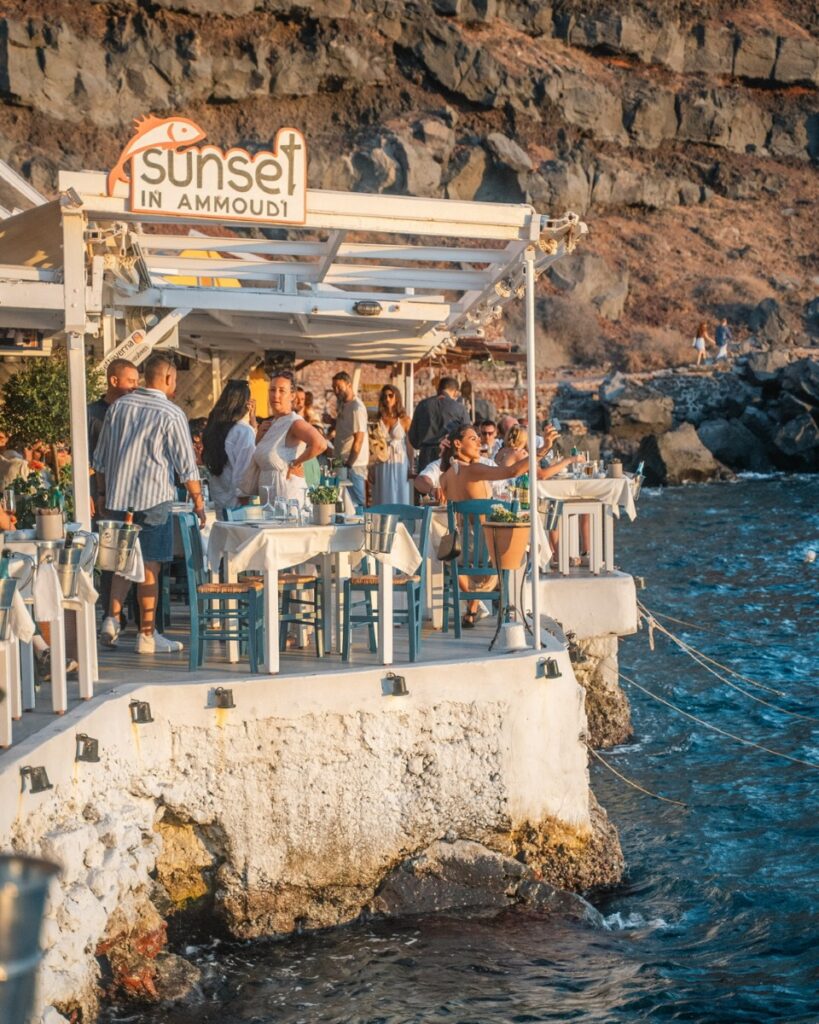
If you’re staying for a while, consider exploring nearby spots:
- Thirassia Island — a peaceful, undeveloped alternative to Santorini
- Ios — beautiful beaches and a youthful vibe (quick ferry ride away)
- Folegandros — a hidden Cycladic gem with fewer crowds
- Crete — if you’re combining islands, Crete is a fantastic next stop
Best Apps for Santorini Travel
- Google Maps – Essential for getting around
- Moovit – For local bus routes and times
- Santorini Experience – Local tips, restaurants, and events
- Ferryhopper – Book ferries to/from other islands
- Google Translate – Useful for Greek menus or signs
- Instagram – For finding scenic photo spots
FAQ: First-Time Visitors to Santorini
Q: How long should I stay in Santorini?
👉 3–5 days is ideal for a well-rounded experience.
Q: Do I need a car?
👉 Not necessarily. Buses run between major towns, and taxis/ATVs are available. But renting a car offers the most flexibility.
Q: Is Santorini family-friendly?
👉 Yes! While it’s romantic, there are beaches, boat rides, and activities great for kids.
Q: Is English widely spoken?
👉 Yes — most locals in tourism speak good English, but learning a few Greek phrases is appreciated.
Q: When’s the best time to visit?
👉 Late April to early June and September to October — perfect weather, fewer crowds.
I am Zoe Grace, a passionate enthusiast of cruise ships. With a decade of firsthand experience in the cruising industry, I have developed a deep understanding of the intricacies and wonders that these majestic vessels hold.
Now, I am excited to embark on a new journey as an author, sharing my knowledge and insights with readers who share my fascination for the world of cruising.
Join me as we explore the captivating world of cruise ships together.



